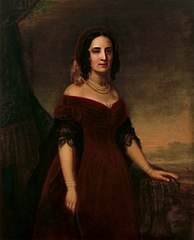
Ellen Arthur
Ellen Lewis Herndon Arthur (born Culpeper, Virginia, 1837; died New York, New York, January 11, 1880) was the wife of Chester A. Arthur, twenty-first president of the United States. She was the daughter of William Lewis Herndon, an explorer of the Amazon River. She died before Arthur was ever elected president. Children could visit a website at: Ellen Lewis Herndon Arthur.
Virginia Lee Burton (born Newton Centre, Massachusetts, 1909; died Boston, Massachusetts, October 15, 1968) was a children’s book writer and illustrator. She won the 1943 Caldecott Medal for The Little House. She also wrote and illustrated Mike Mulligan and His Steam Shovel. Children could learn more at: Virginia Lee Burton.
Donald Crews (born Newark, New Jersey, 1938) is a picture book author and illustrator. He has received two Caldecott Honor Awards: in 1979 for Freight Train and in 1981 for Truck. He received the 2015 Laura Ingalls Wilder Award for his body of works.
Laurent de Brunhoff (born Paris, France, 1925) writes and illustrates books for children. His father, Jean de Brunhoff, created the Babar series. Laurent continued to write 45 more Babar books after his father died. He has also written other types of books for children.
Millicent Selsam (born New York, New York, 1912; died New York, New York, October 12, 1996) wrote over 100 books for children. Her books include Greg’s Microscope and Egg to Chick. Children can learn more at: Millicent Selsam.
Mary Wollstonecraft Shelley (born London, England, 1797; died London, England, February 1, 1851) was an author. One of her most famous works is Frankenstein. She was married to poet Percy Bysshe Shelley, and she edited much of her husband’s work after he died. Children can read Frankenstein and many of her other works at: Project Gutenberg.
Roy Wilkins (born St. Louis, Missouri, 1901; died New York, New York, September 8, 1981) was a civil rights leader. The grandson of a slave, he was a driving force in the NAACP. Children could learn more at: Roy Wilkins.
Ted Williams (born San Diego, California, 1918; died Inverness, Florida, July 5, 2002) was a famous baseball player. He was a veteran of both World War II and the Korean War. An outfielder, he was inducted into the Baseball Hall of Fame in 1966. Children could learn more at: Ted Williams.







